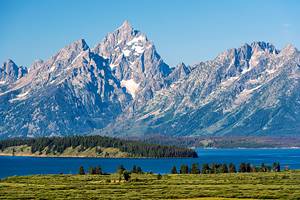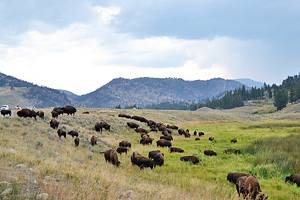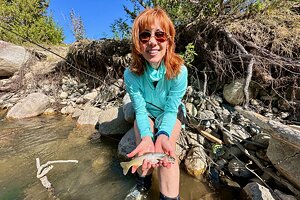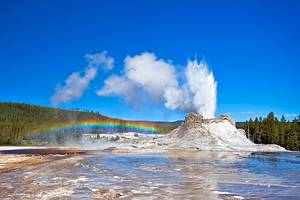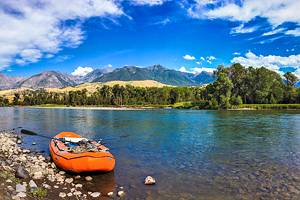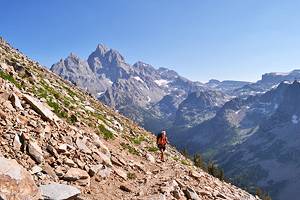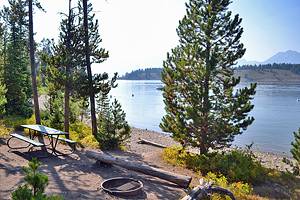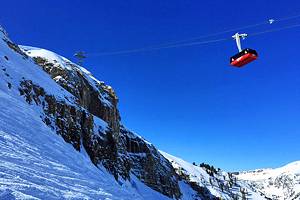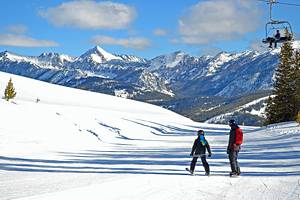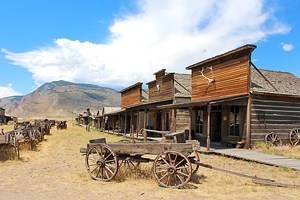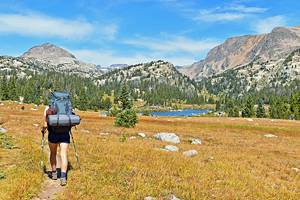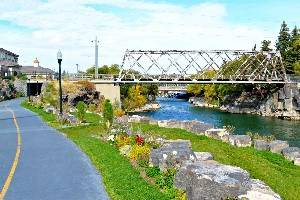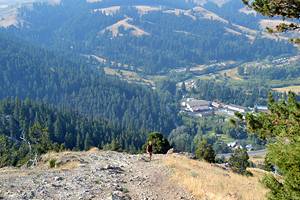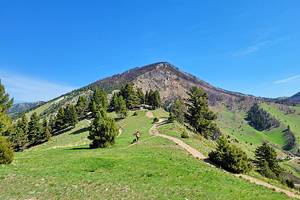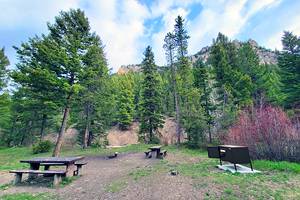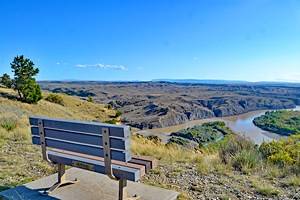Hiking Trails in Yellowstone National Park
Yellowstone National Park encompasses over two million acres of the American West, making it an incredible destination for hiking. It's designated as the nation's first national park and sits atop an active volcano and ancient calderas. This vast expanse proudly displays the densest collection of hydrothermal features in the world. And these geysers, fumaroles, and fountains are just the tip of Yellowstone National Park attractions.
The National Park Service provides plenty of hiking trails in Yellowstone, including planked boardwalks atop the fragile crust of thermal environments. And a few of these iconic Yellowstone hiking trails, like the Upper Geyser Boardwalk next to Old Faithful, are must dos on any visit. Other far-reaching adventures, like the Slough Creek Trail, offer a taste of an uncrowded Yellowstone.
Due to the park's large area and variety of unique regions to explore, it's highly advised to mark several days off the calendar for your next visit. Many of the best campgrounds in Yellowstone enable great overnight visits and proximity to several noteworthy trailheads.
Bison and other wildlife are encountered while hiking in Yellowstone, and visitors should keep their distance so as not to disturb these native residents.
Learn more about the best places to visit in this vast wilderness with our list of the top hiking trails in Yellowstone National Park.
Upper Geyser Basin Boardwalk
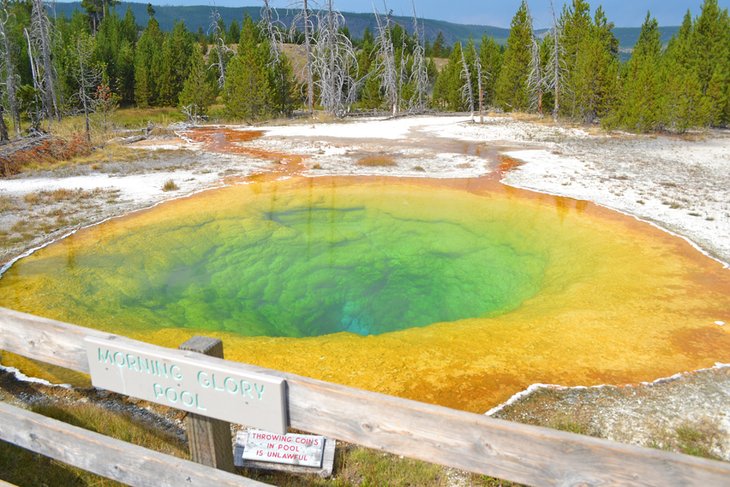
Containing, for many, the highlight of Yellowstone National Park, the Upper Geyser Basin has the densest concentration of hydrothermal features in the world. This includes the always dependable Old Faithful Geyser.
There is a lot to explore within the two square miles of the Upper Geyser Basin, including more than half of Yellowstone's 300 geysers. Other notable hydrothermal features in Upper Geyser Basin include the regal Castle Geyser and the thermophile-filled Morning Glory Pool.
The 1.5-mile boardwalk trail in Upper Geyser Basin follows along the Firehole River and leads to Geyser Hill. There's always a good chance of catching a hydrothermal show with predicted eruption times for five geysers along the boardwalk, including Old Faithful. Daily eruption times are posted at the Old Faithful Visitor Center. Old Faithful erupts every 35 to 120 minutes.
The Upper Geyser Basin Boardwalk deserves a strolling pace. Between the erupting geysers, burbling hot springs, and fuming fumaroles, this dynamic area really defines what makes Yellowstone so unique. And after seeing, smelling, and hearing the activity on the boardwalk trail, it's easy to extend adventures into the surrounding area.
Other great day hikes, like the Lone Star Geyser Trail, are close by, and the Midway Geyser Basin is only a short drive away. Adjacent the Old Faithful Geyser, the historic Old Faithful Inn, established in 1904, provides an impressive, rustic dining hall and timeless accommodations. And next to the Inn, the more-modern Old Faithful Visitor Education Center provides valuable information about the area.
West Thumb Geyser Basin Boardwalk
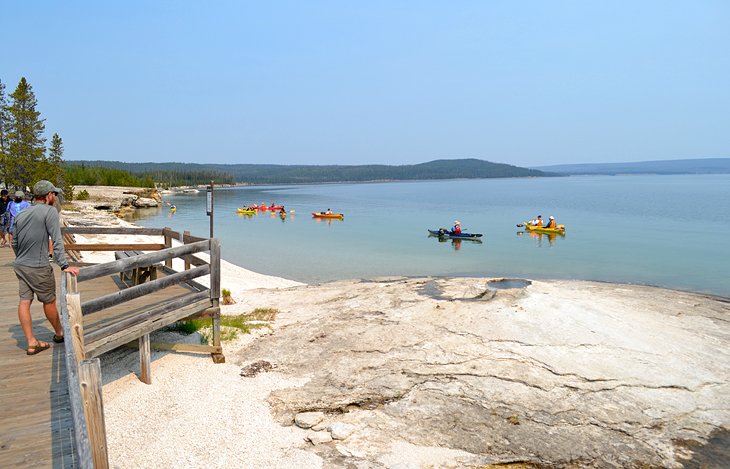
Located on the west thumb of the 131-square-mile Yellowstone Lake, the West Thumb Geyser Basin provides an aquatic environment infused with hydrothermal features. Even in the parking lot of West Thumb Geyser Basin, gurgling geysers are heard, and once out on the half-mile boardwalk, they can't be missed.
Between Abyss Pool, Percolating Spring, and Twin Geysers, there's a lot to stop and see on the West Thumb Geyser Basin Boardwalk. Another must-see is the underwater Lakeshore Geyser and Fishing Cone.
Adjacent to the sulfuric smell and bright colors of the basin, Yellowstone Lake, the largest lake above 8,000 feet in North America, offers welcoming views of the deep water.
Hikers at the West Thumb Geyser Basin mostly stick to a level boardwalk the entire way and should plan for at least an hour to check out the area. For a longer adventure, the nearby Yellowstone Lake Overlook Trail is a 1.7-mile hike that provides a commanding view of the water.
Grand Canyon of the Yellowstone: South and North Rim
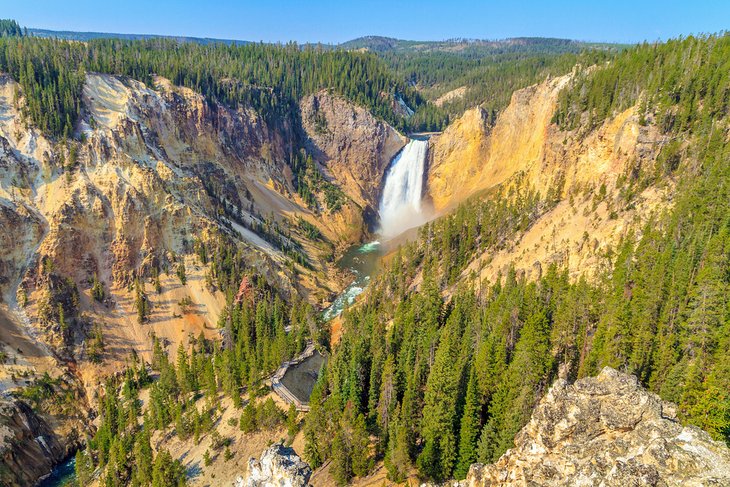
While Yellowstone National Park might be best known for its wide array of hydrothermal features, the nation's first national park also delivers on some jaw-dropping views. The Grand Canyon of the Yellowstone is an excellent example of these impressive vistas. With two rims to explore and massive canyon walls to admire, even with the viewpoints, it's a challenge to comprehend the enormity of it all.
On the North Rim, a recommended course of adventure includes the switchback-filled Brink of the Lower Falls Trail, where you can nearly feel the splash of Lower Falls as it plummets 300 feet into the canyon below. Likewise, the Brink of the Upper Falls Trail on the North Rim offers another great perspective of plunging water.
On the South Rim, Uncle Tom's Trail offers great views of the Upper and Lower Falls and serves as a worthy place to enjoy a picnic. The trailhead for Uncle Tom's Trail features a comfort station including bathrooms, and the viewing area is known to draw big crowds throughout the summer.
For a little more breathing room, the aptly named Point Sublime and Artist Point trailheads are accessible with a longer drive down the South Rim.
Midway Geyser Basin: Grand Prismatic Boardwalk
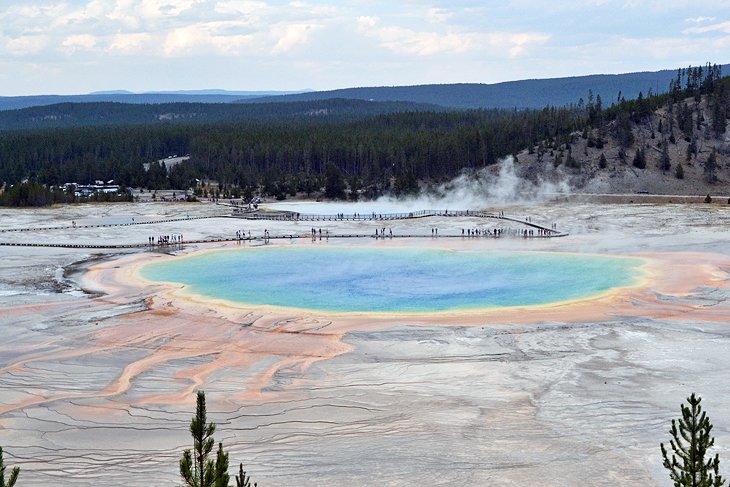
The Midway Geyser Basin is within a five-minute drive from the Old Faithful Inn and Upper Geyser Basin and is home to one of Yellowstone's largest and most impressive hydrothermal attractions.
The Grand Prismatic Spring of the Midway Geyser Basin lives up to its name, measuring approximately 360 feet in diameter. And with clouds of steam churning above the vibrant hues of heat-loving bacteria in the spring, Grand Prismatic looks like it belongs on another planet.
Visitors to the Midway Geyser Basin are encouraged to tour the half-mile boardwalk that skirts the rim of the Grand Prismatic Spring. Other mega-sized features encountered along the way include Excelsior Geyser Crater, which pumps thousands of gallons of heated water into the nearby Firehole River.
For a stepped-back perspective of Grand Prismatic, visitors should head to the nearby Fairy Falls Trailhead to hike up the 0.6-mile Grand Prismatic Overlook Trail.
Mount Washburn Trail
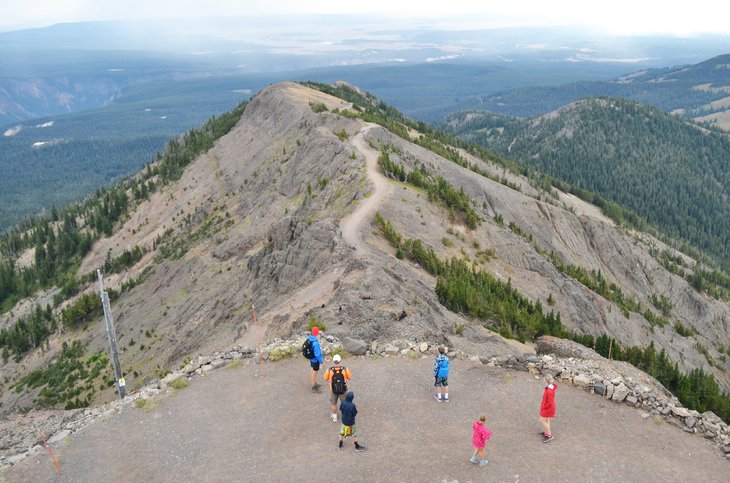
For the uphill hikers that come to Yellowstone, Mount Washburn offers some elevation to test the legs. Accessible from the Dunraven Pass parking lot, just north of Canyon Village, Mount Washburn provides a healthy climb, great views, and an interesting glimpse into the park's ongoing history with forest fires.
The 6.8-mile round trip up and down Mount Washburn follows a Forest Service road, slowly exposing great views of the Grand Canyon of the Yellowstone, Hayden Valley, and Grand Teton the entire way. The trail climbs 1,400 feet.
A working fire tower roosts at the peak of Mount Washburn. On any given day, expect to see a park ranger in the fire tower keeping their eye out for fire signs in the park. Separate space in the fire tower is reserved for visitor information and binocular stands, which serves as a great resting spot before heading back down the mountain.
Mount Washburn from Dunraven Pass is one of the most popular day hikes in the park. Don't let the number of people hiking the trail make you think it's not a challenge, though. Hikers should bring water and snacks, as well as extra layers in the event of fast-moving weather.
The park's native wildlife is also commonly spotted along the route, and visitors should carry bear spray as a precaution.
Mammoth Hot Springs: Upper and Lower Terrace Boardwalks
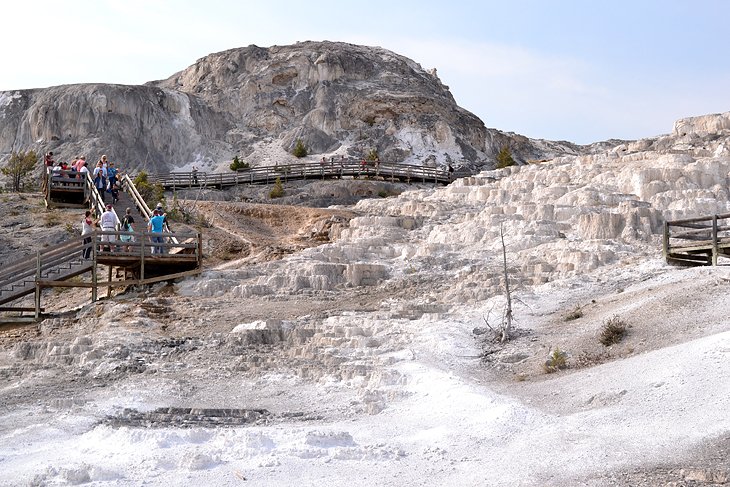
Located on the far north side of Yellowstone National Park, near the Montana entrance, Mammoth Hot Springs proudly displays ancient activity still at play. Featuring an Upper, Lower, and Main Terrace to explore, Mammoth Hot Springs is a dynamic area full of color, steam, and growing geological formations.
Along the boardwalk on the Lower Terrace, the cascading travertine of Minerva Terrace deserves a moment's appreciation, as do the changing colors of New Blue Spring on the Main Terrace. Every inch of Mammoth Hot Springs is worth exploring, and chances are it will significantly change if you visit a decade later.
After the adventure, visitors to the Mammoth Hot Springs Terraces can continue their hike on the nearby and wildlife-rich Beaver Ponds Trail.
For extended stays in the area, or Yellowstone hiking in the winter, the nearby Mammoth Hot Springs Campground is one of the best campgrounds in Yellowstone, and the only campground open year-round.
Norris Geyser Basin Boardwalk
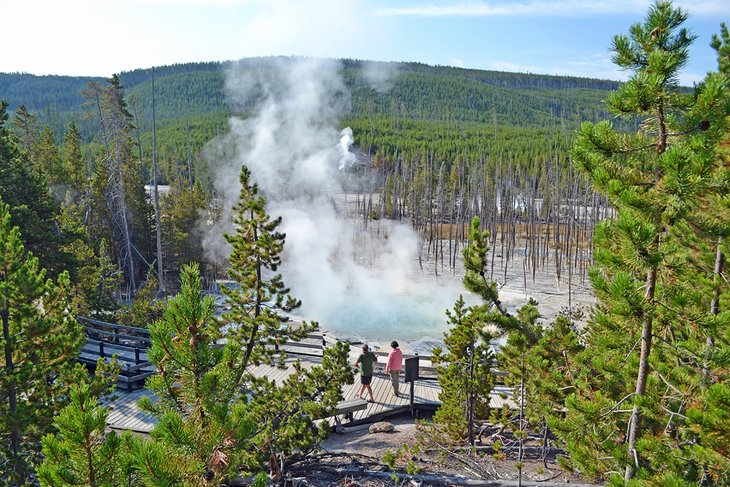
Norris Geyser Basin is the most active geyser area of Yellowstone National Park, defined by the scorched appearance of geysers, hot springs, and a fragile crust. It's an otherworldly environment filled with colorful thermophiles, hissing steam, and three miles of boardwalk to explore it all.
The Norris Geyser Basin is split between a Back Basin and Porcelain Basin and can take at least half the day to explore. One of the area's largest features, Steamboat Geyser is the world's tallest active geyser and has the capability to shoot water 300 feet into the air.
It is extremely important for hikers to stay on the boardwalk paths, as it's only a thin crust atop the hot springs and fumaroles in the area that reach up to 200 degrees Fahrenheit (93 degrees Celsius).
The on-site Norris Geyser Basin Museum displays the history of the area and is a historic piece of architecture itself built in the 1920s.
Slough Creek Trail
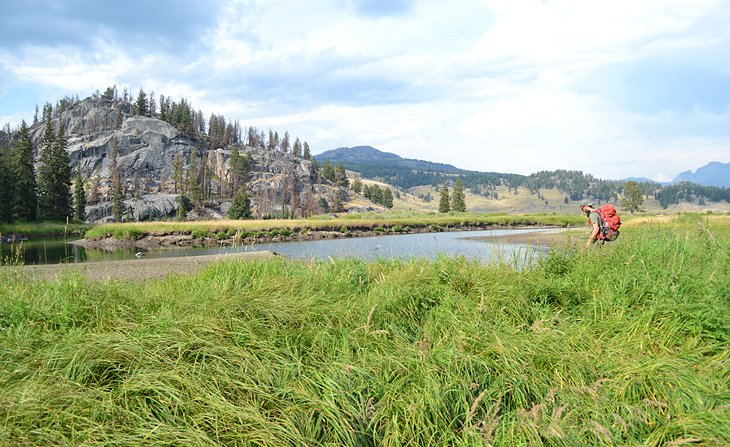
Venturing on the Slough Creek Trail in the northeast Tower-Roosevelt region of the park allows an out-and-back day hike or an exciting overnight adventure. The trail is within the Lamar Valley and along the luscious meadows next to Slough Creek. It's a common getaway for anglers, backpackers, and wildlife alike.
Every step of the 20-mile Slough Creek Trail reveals a less crowded, wide-open Yellowstone landscape. For those looking to camp along or near the Slough Creek Trail, backcountry permits are needed for overnight travel. Backpacking and spending the night in this less crowded area affords very favorable stargazing at night.
The primitive Slough Creek Campground is adjacent to the trailhead and has 16 sites available on a first-come, first-served basis.
Boiling River Trail
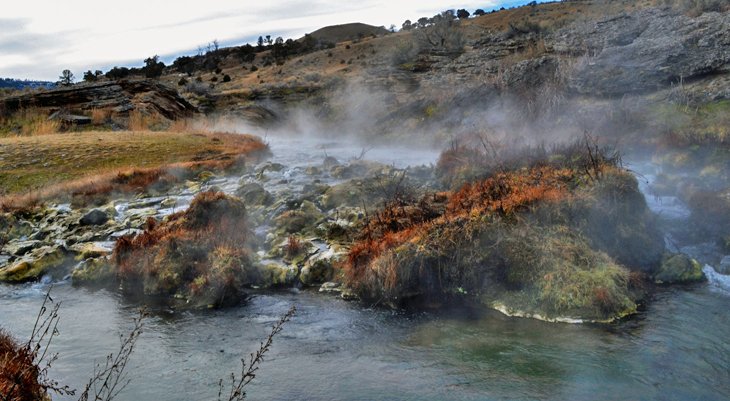
The influx of hydrothermal water into the icy cold Gardner River creates the heated swimming spot known as the Boiling River. It's one of the few hydrothermal areas visitors can interact with at the park. This unique attraction is just north of Mammoth Hot Springs, and a short drive from the Roosevelt Arch at the North Entrance of the park.
The Boiling River requires just a half-mile trail to access, and visitors may want to bring a towel or dry change of clothes. While it is physically dangerous to soak in the Boiling River hot spring itself, the output of hot water into the Gardner River is plenty to warm things up.
Limited facilities for changing into a bathing suit are near the Boiling River, and swimming may be off-limits if water levels are too high. Catch the river at the right time, however, and feel for yourself some of the hydrothermal action that courses throughout the entire Yellowstone landscape.
Lone Star Geyser
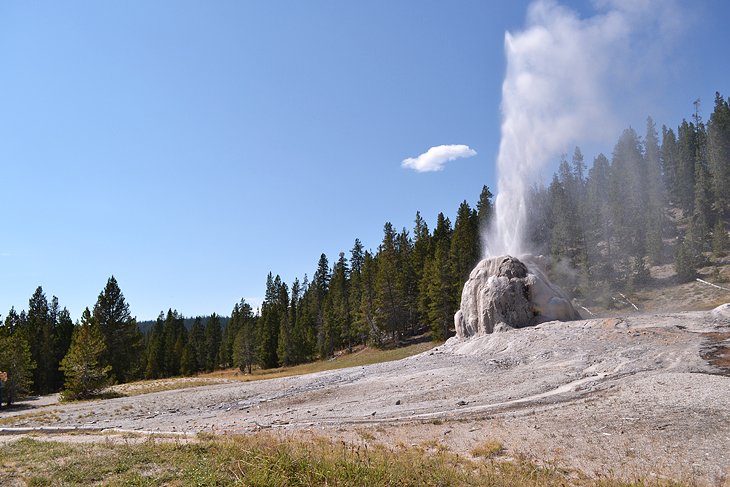
Crossing paths with the Continental Divide Trail, the Lone Star Geyser was given its name thanks to its stray location within the Upper Geyser Basin. Currently, this hydrothermal feature provides the easiest access to a backcountry geyser in the park.
Without a doubt, the first people to stumble upon the scorched landscape surrounding this massive geyser were amazed at the sight, and even more in awe at the 30- to 45-foot spray of water that erupted out of the cone. The Lone Star Geyser still shows its impact on the area today and spouts water roughly every three hours.
To access and witness an eruption of Lone Star Geyser, it's a scenic 2.4-mile hike or bike ride down an old forest service road that meanders next to the Firehole River. The retired forest road and Lone Star Geyser Trail is accessible from the Grand Loop Road in the Upper Geyser Basin, 3.5 miles south of the Old Faithful Overpass.
While Lone Star is less visited because of this 4.8-mile, out-and-back route, the grade is flat, and the terrain is easy, making this impressive backcountry geyser easily accessible for most levels of explorers. The key to making the most out of any visit to Lone Star Geyser is timing a visit to coincide with an eruption. Eruption times can be found at most visitor centers throughout the park.
Fairy Falls
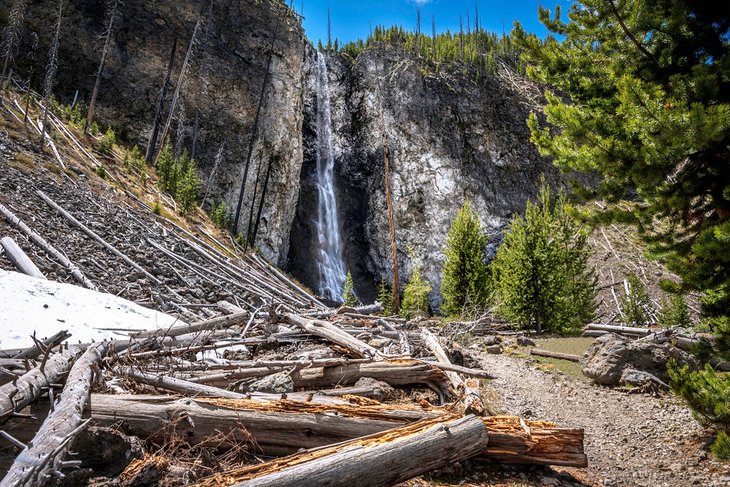
When visiting the Midway Geyser Basin and places like Grand Prismatic Hot Spring, etch some time to visit Fairy Falls – one of Yellowstone's best waterfalls. This 200-foot horsetail waterfall offers a dazzling scene and equal parts mist.
Two trailheads lead to Fairy Falls. A designated Fairy Falls parking lot is just south of Midway Geyser Basin, and another option is available to the north at the end of Fountain Flat Drive. Finding a parking spot is easier at the end of Fountain Flat Drive but it requires a longer hike.
It's approximately a 1.6-mile hike to the falls from the Fairy Falls parking area. Users can also traverse an additional 0.6 miles to reach Imperial and Spray Geysers.
DeLacy Creek Trail
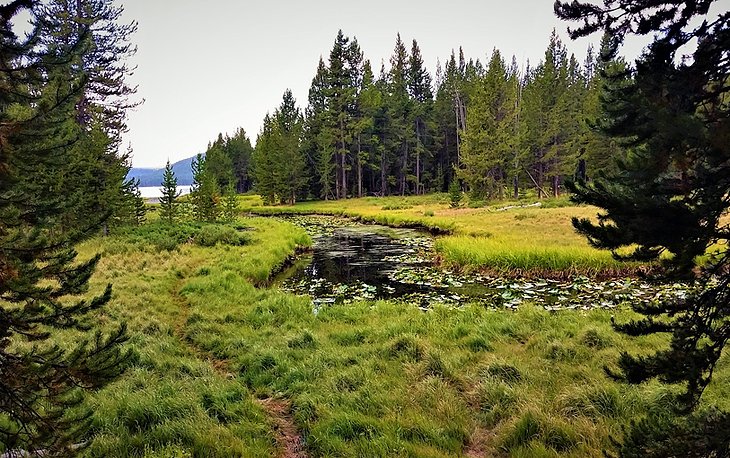
The DeLacy Creek Trail is a 5.8-mile, out-and-back trail that follows the flow of DeLacy Creek to the shores of Shoshone Lake - Yellowstone's largest backcountry lake. The trailhead is just under nine miles west of the West Thumb Geyser Basin. Wildlife is commonly spotted along this moderately graded route, and the views of Shoshone Lake are breathtaking.
Upon reaching the lake, visitors are encouraged to explore the shoreline before heading back the way they came. If the weather is warm, it's fun to take a quick dip in the icy cold waters of Shoshone Lake before heading back. For those with a permit, the DeLacy Creek Trail is also a popular spot to access Yellowstone's vast wilderness areas.
Storm Point Trail
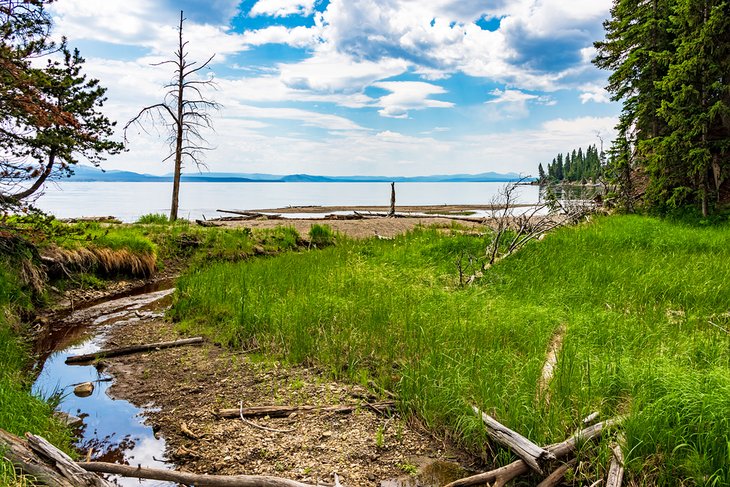
Storm Point Trail is on the north side of Yellowstone Lake, near the Fishing Bridge area of the park. It offers a family-friendly and flat hike with a high chance of spotting wildlife. And the lollipop-loop trail is less than three miles long, lending to quick adventures if you're short on time.
But there's plenty of natural landscape to extend the hiking time. The trail begins near the shores of Indian Pond, less than three miles east of Fishing Bridge. From here, the trail continues through some trees before emerging onto the wind-strewn Storm Point. Here, yellow-bellied marmots are known to skitter about.
This north side of Yellowstone Lake is full of hiking and visitor opportunities. The iconic Fishing Bridge itself is a tourist magnet. No fishing is allowed from this historic bridge, which dates back to the 1930s, but it still affords a beautiful view of the lake and the outpouring Yellowstone River.
Bechler River Trail
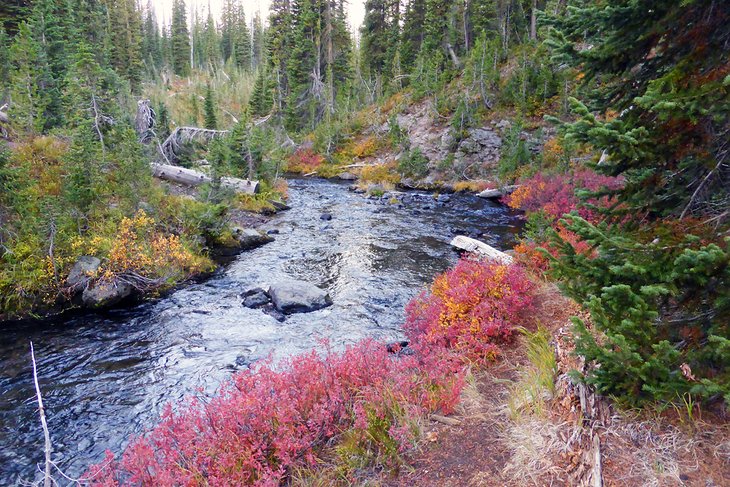
While seeing other people should be an expected occurrence at Yellowstone National Park, if you want to ditch the crowds for a day or two, your best bet will be found in the park's sprawling backcountry.
Permits are needed for any overnight travel in the Yellowstone backcountry, and while chances of running into other humans diminish the further traveled, your exposure to all sorts of wildlife increases tenfold. Proper protocol needs to be followed with backcountry camping in Yellowstone, including safe food storage. Hikers also need to pack in and pack out all the necessary gear for a comfortable wilderness stay.
A great backcountry route is the Bechler River Trail, located in the remote southwest corner of Yellowstone (known as the Cascade Corner). Comprised of an out-and-back route from the Bechler Ranger Station, the Bechler River Trail covers just over 30 miles of trail along with a moderate grade, enabling ambitious hikers to complete the trek in less than two days. Bechler River Trail is worth more of a leisurely pace though, or at least some built-in time to appreciate the abundant waterfalls lining the trail.
Prime hiking time for the Bechler River Trail begins in September, after the river crossings have subsided in strength and the mosquitos have diminished. Required backcountry permits keep the Bechler River Trail less busy, and these permits are extremely competitive for September. Applications for advance backcountry permits are processed beginning March 31 of the same year.
Map of Hiking Trails in Yellowstone National Park
More Related Articles on PlanetWare.com
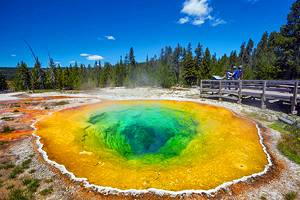
More to Explore in Yellowstone: Our guide to the best attractions in Yellowstone provides insight on all the things to see and do.
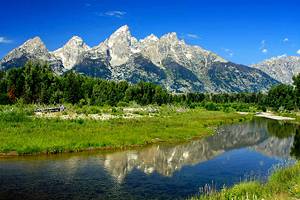
Wyoming Adventures: Just south of Yellowstone National Park, the mountainous landscape of Grand Teton National Park offers excellent adventures. The nearby city of Jackson Hole makes for a great base camp to explore Grand Teton, or a fun place to ski down a mountain in the winter. For more to explore in the state, our top attractions of Wyoming article features other stunning places to visit in the Cowboy State.


